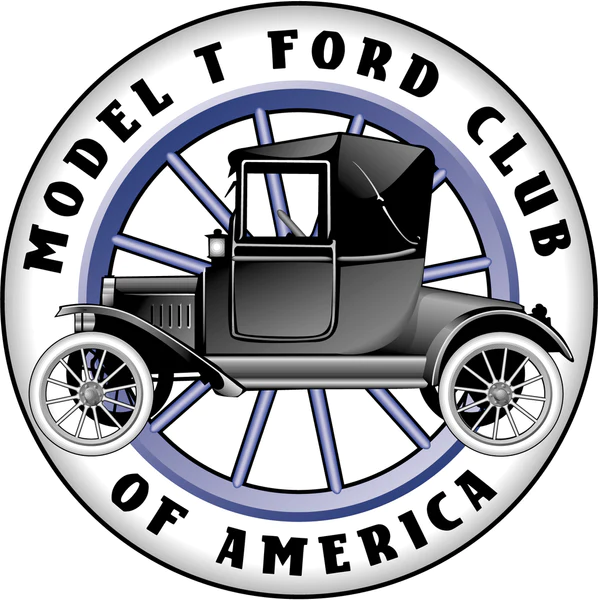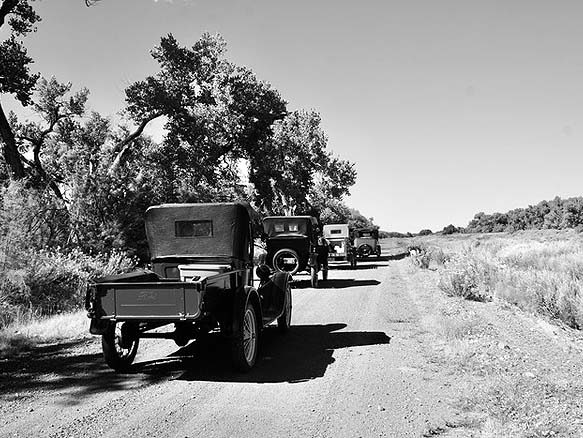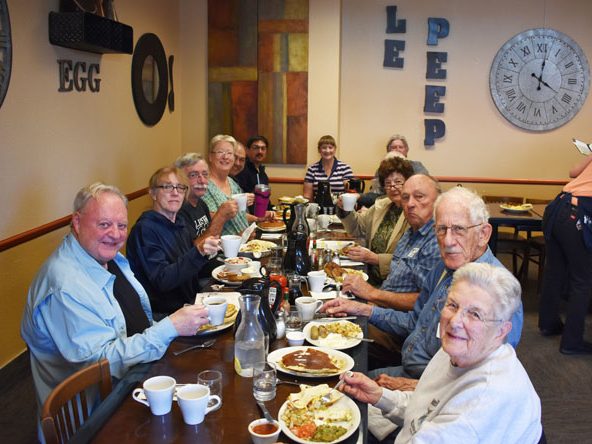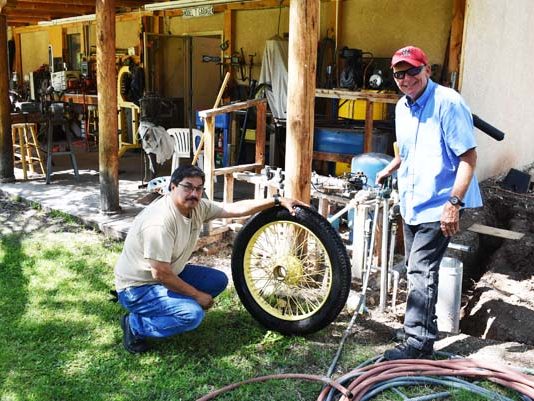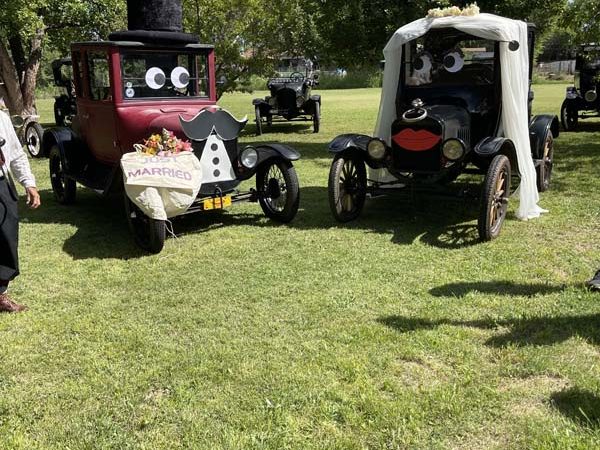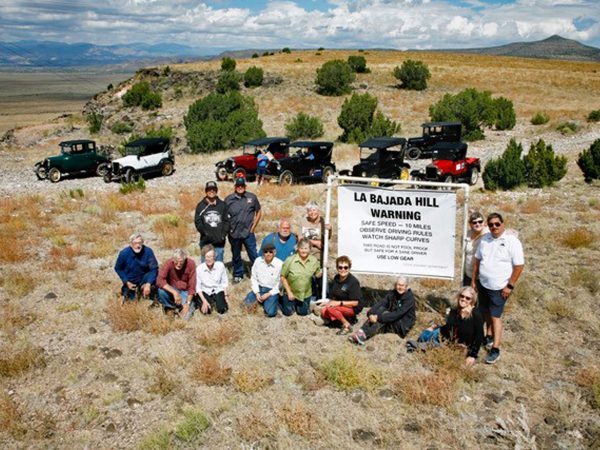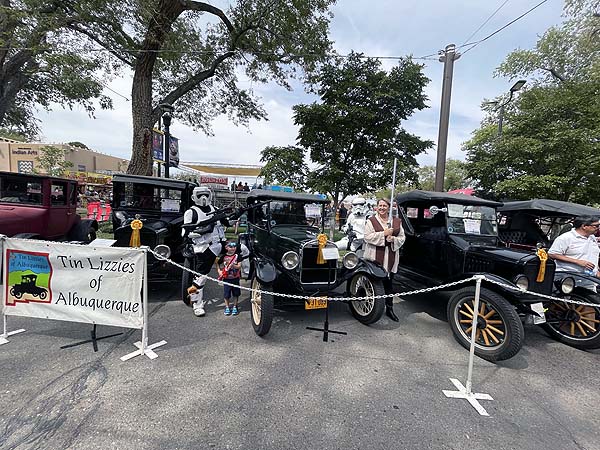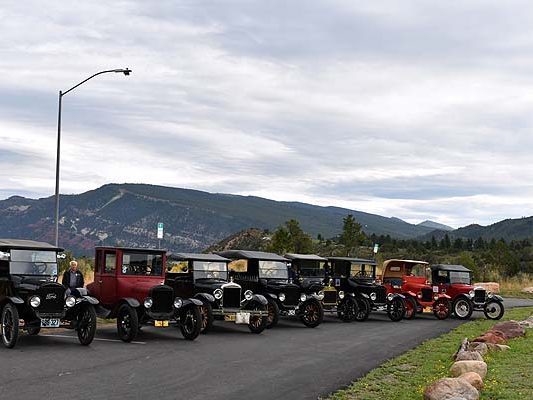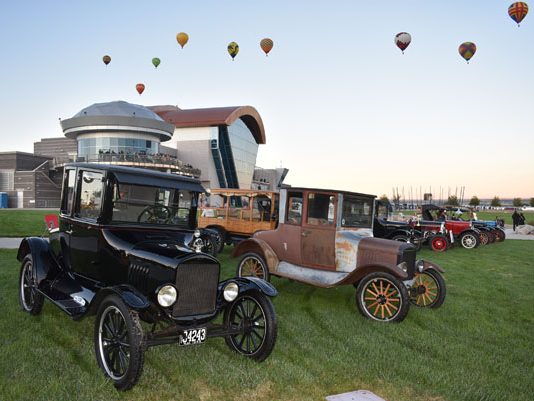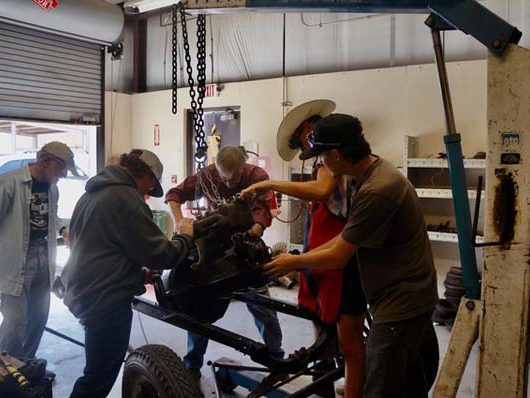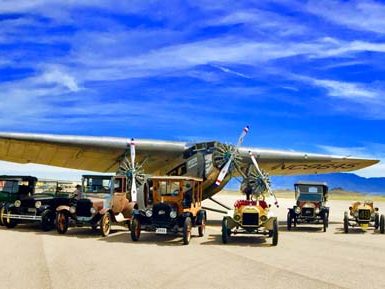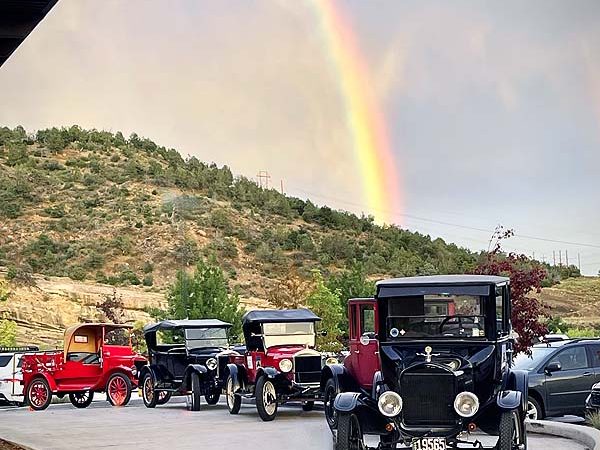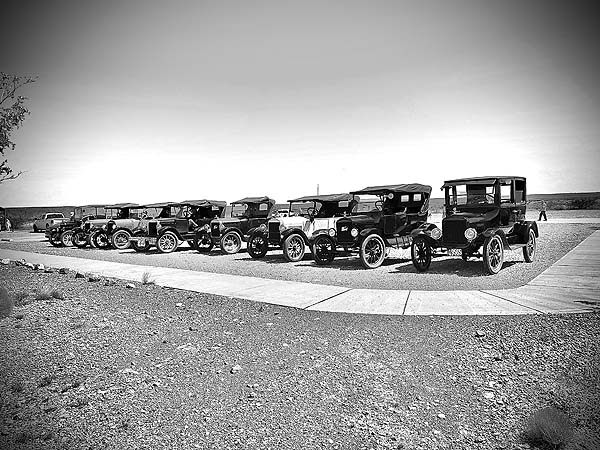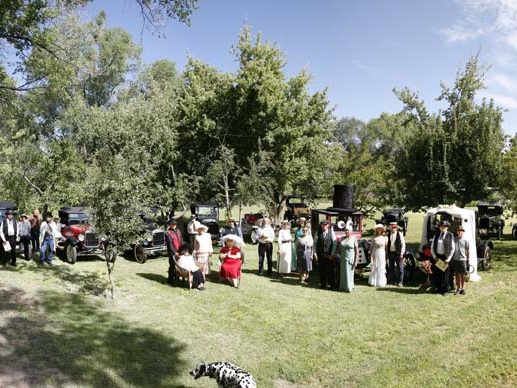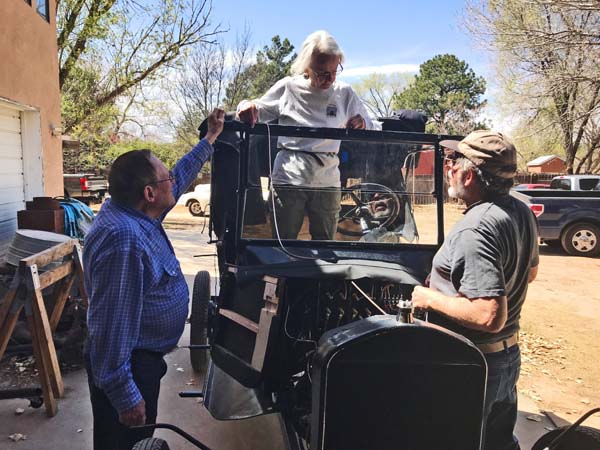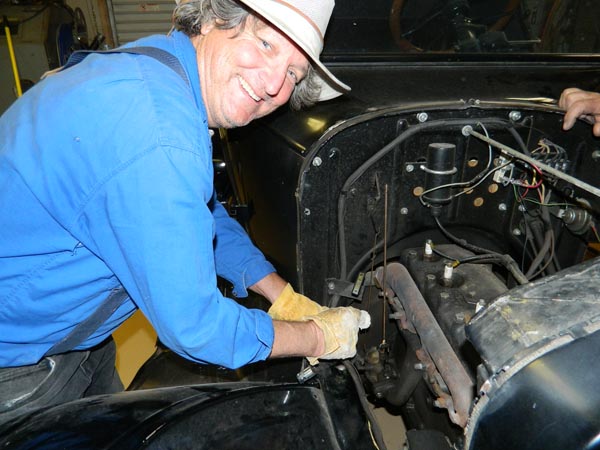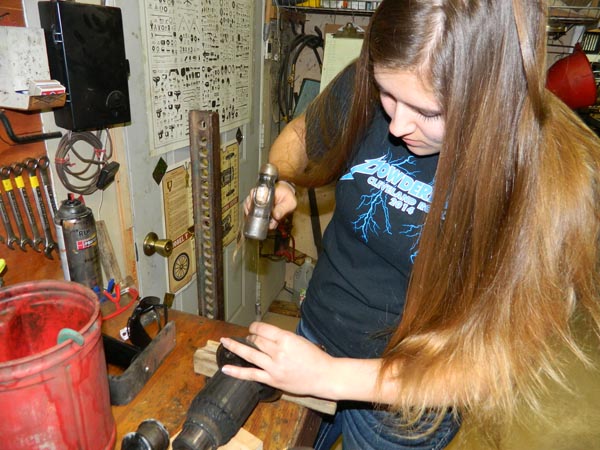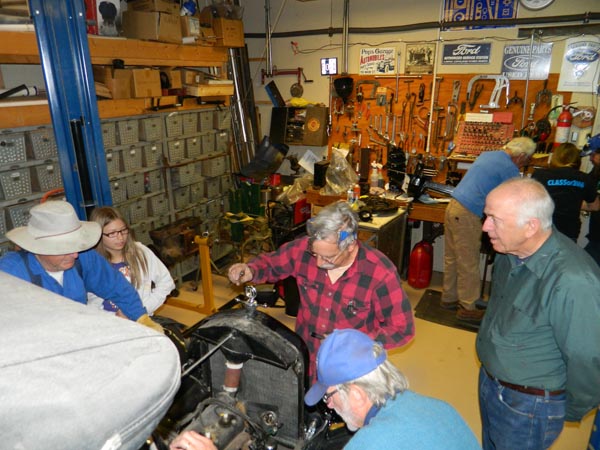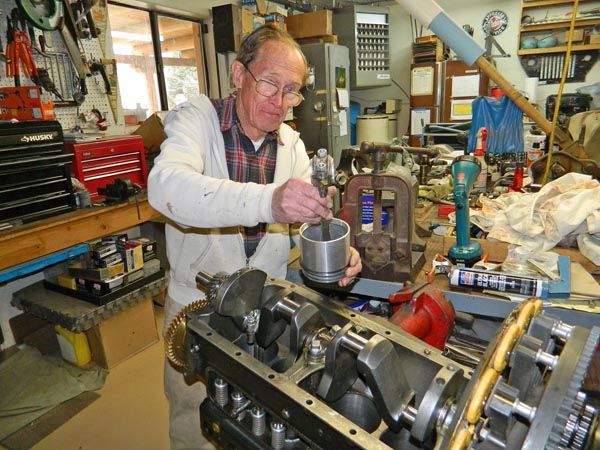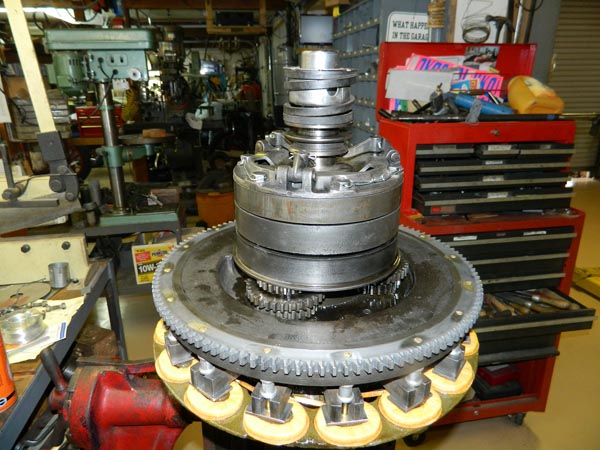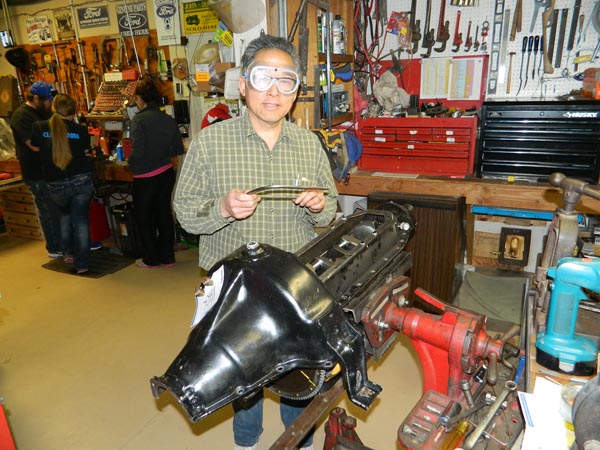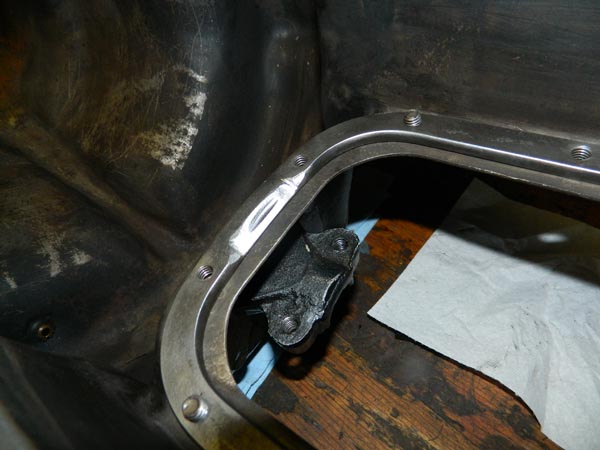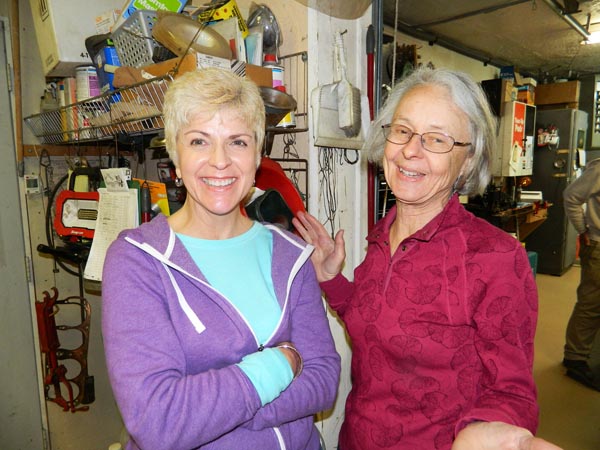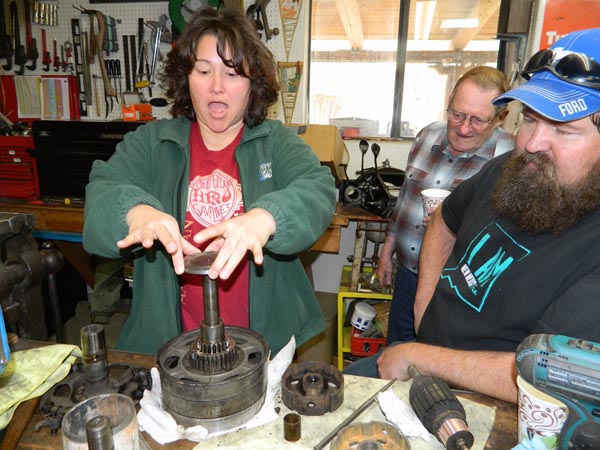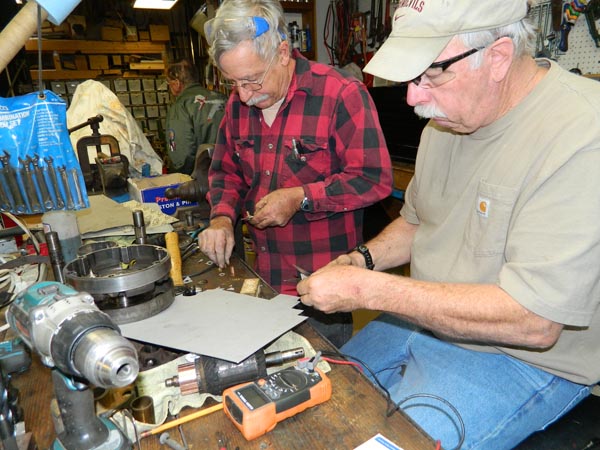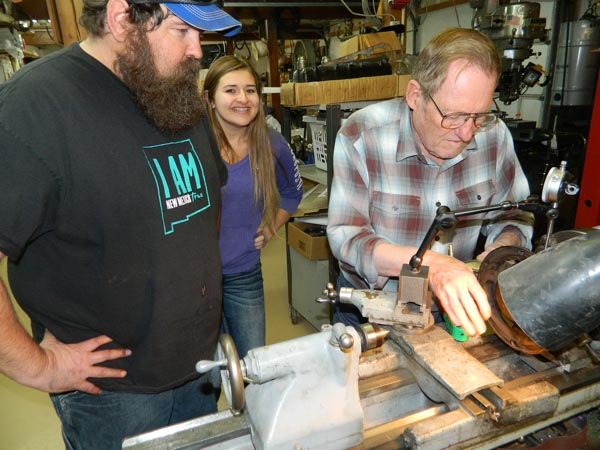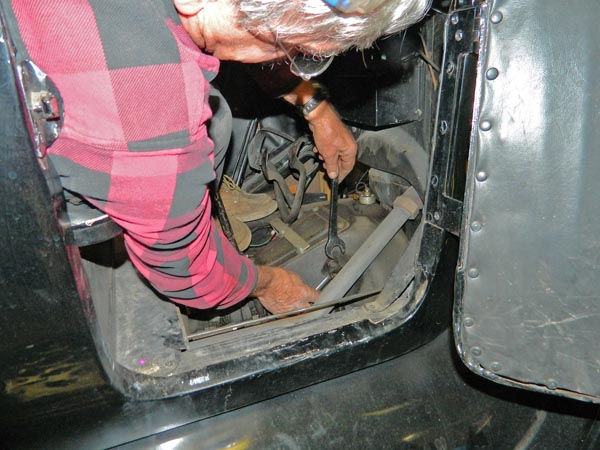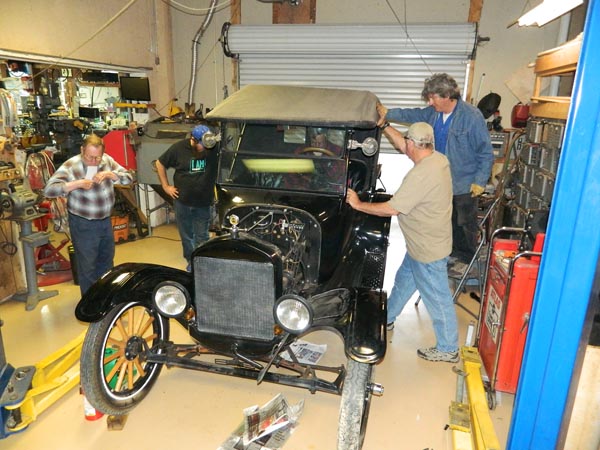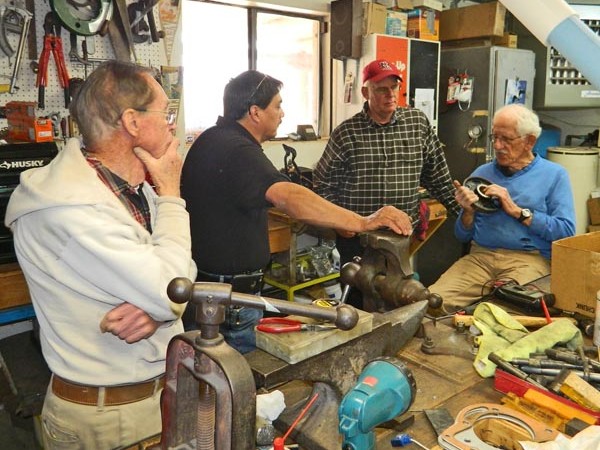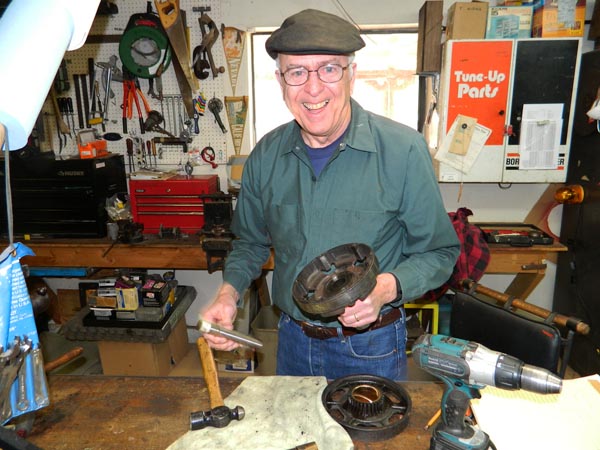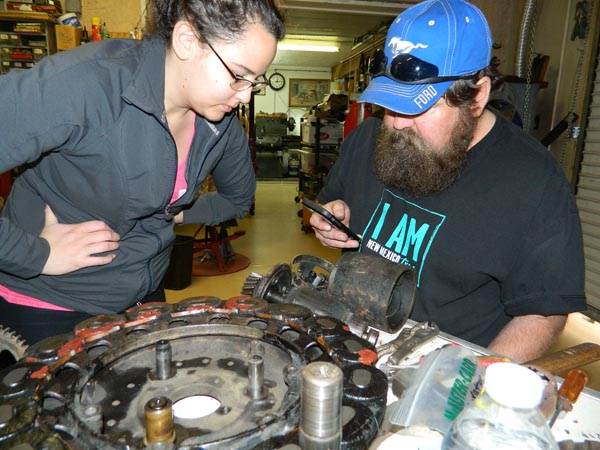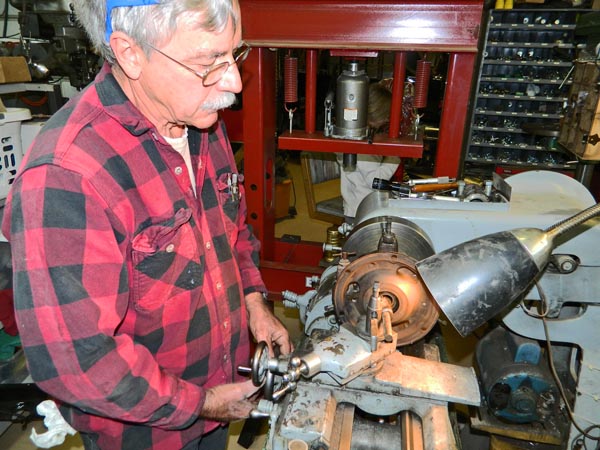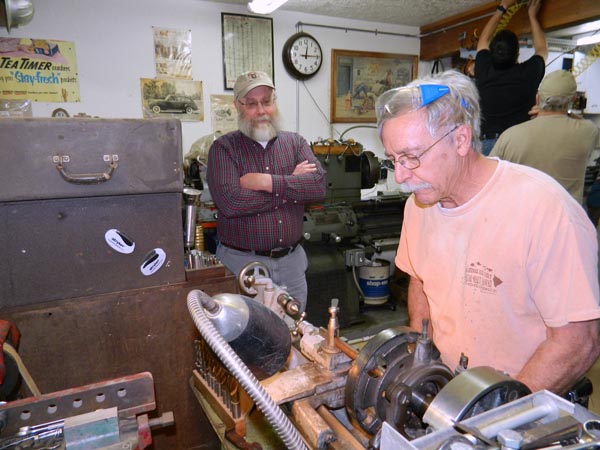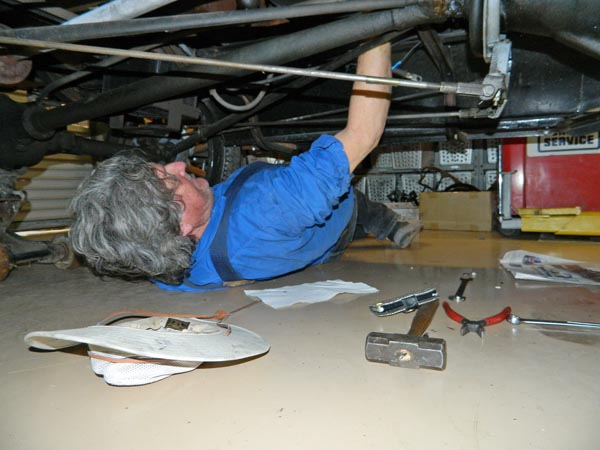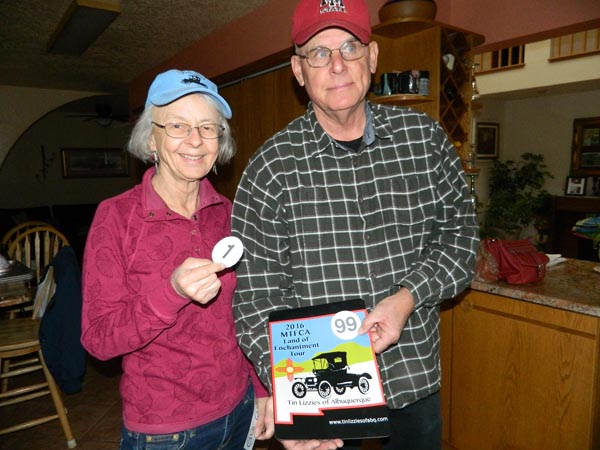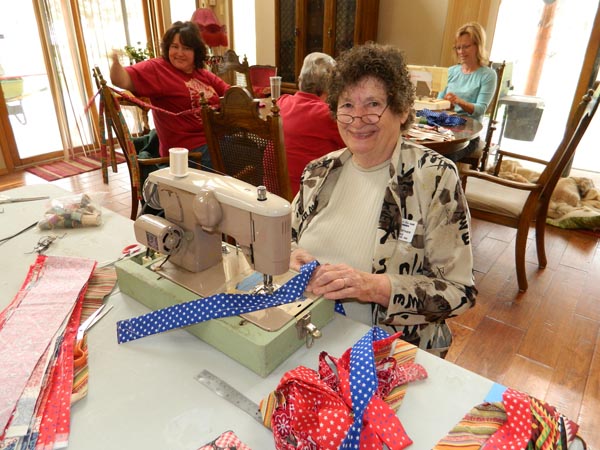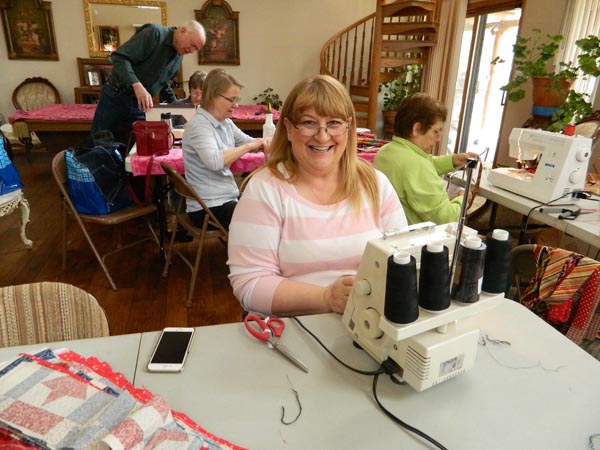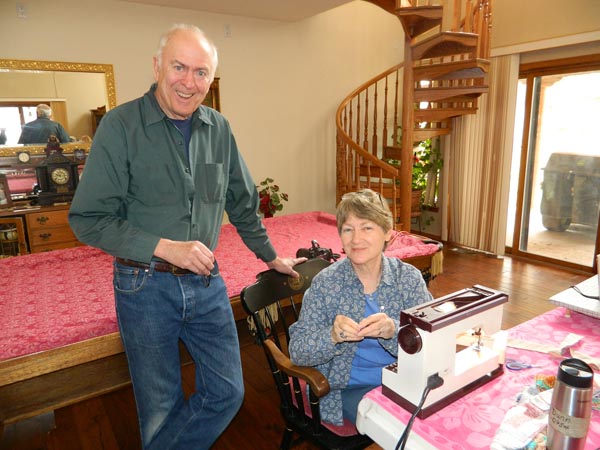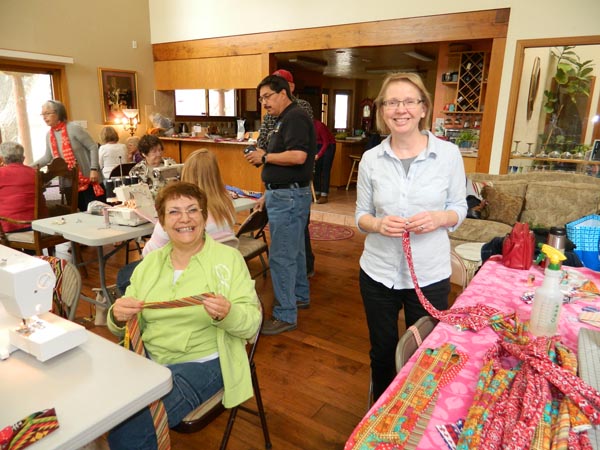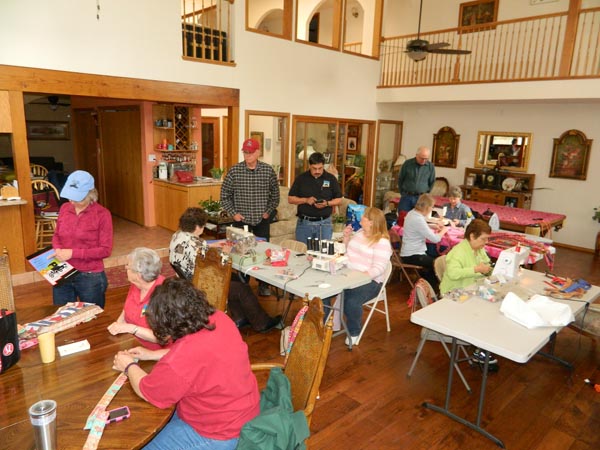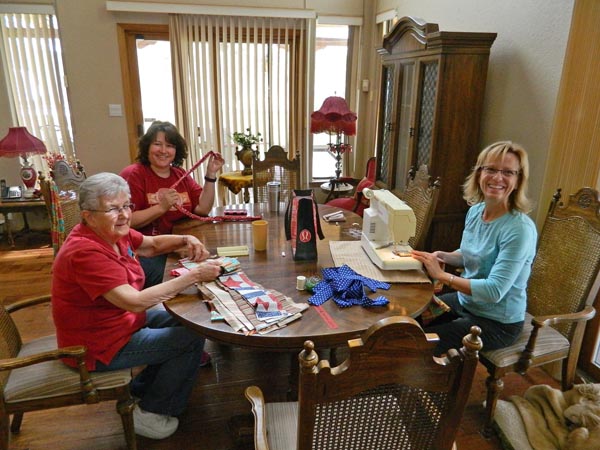Larry held a work party on Saturday, March 12th. The primary projects on this day were the Lance family continuing work on their 1919 engine/transmission, Ken and Kassi Carpenter working on their 1923 family pickup truck to repair the starter switch, and Mark continued work on his 1925 touring car engine/transmission rebuilding project. The ladies were also busy making gel cooling neck wraps for the upcoming MTFCA 2016 Land of Enchantment Tour.
At previous work parties, Phil and his daughters Danielle and Jessalyn had been disassembling a 1919 engine for a speedster project. Their recent tasks have been to clean all parts, straighten the crankshaft, touch-up the insulation on the field coil, and replace the bushings in the transmission gears and drums. The block had been dropped off to Empire Engines for boring and re-sleeving. Larry and Bob Hawk were turning out the old bronze bearings that couldn’t be pressed out.
Ken and Kassi Carpenter brought their family’s 1923 Model T touring car that had been converted to a pickup truck decades ago. This truck has been in the family since 1946! It hadn’t been driven lately due to a faulty starter switch, a weak battery, incorrect adjustment for free neutral, and very probably, a dirty carburetor. Larry and Bill Hansen assisted Ken by rebuilding the starter switch. After these repairs and adjustments, the truck started up!
Mark’s engine/transmission is making progress. The clutch spring and pistons were installed. The U-shaped threaded reinforcing plate, that holds the 4-dip pan in place, needed to be modified to accommodate the larger mass of the balanced SCAT crankshaft. Material had to be ground away near the fourth crank journal and proper clearance was confirmed visually. Without this modification, the counterweight hits the plate. After this procedure, the 4-dip cover was bonded and bolted to the the pan.
The ladies were hard at work making gel cooling neck wraps for the upcoming 2016 MTFCA Land of Enchantment Tour that the Tin Lizzies of Albuquerque is hosting. This neckwear is made by cutting and sewing fabric filled with phase-changing crystals that absorb water and swell into a gel consistency when wet. They provide cooling relief in the summertime due to evaporation. Working on this project were Lorna, Fran, Bernice, Betty, Hedy, Nita, Anne, Sharon, Susan, and Janie.
Thank you Larry and Lorna for another productive and enjoyable work party.
